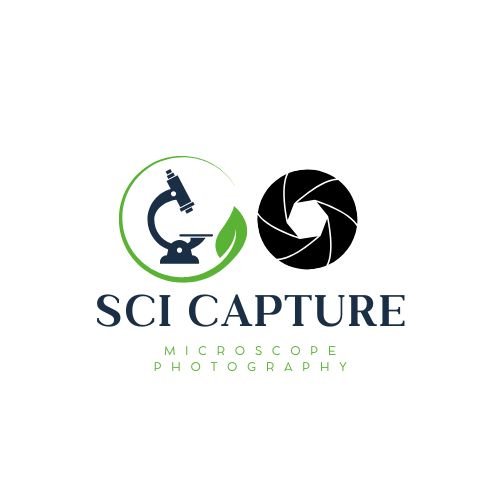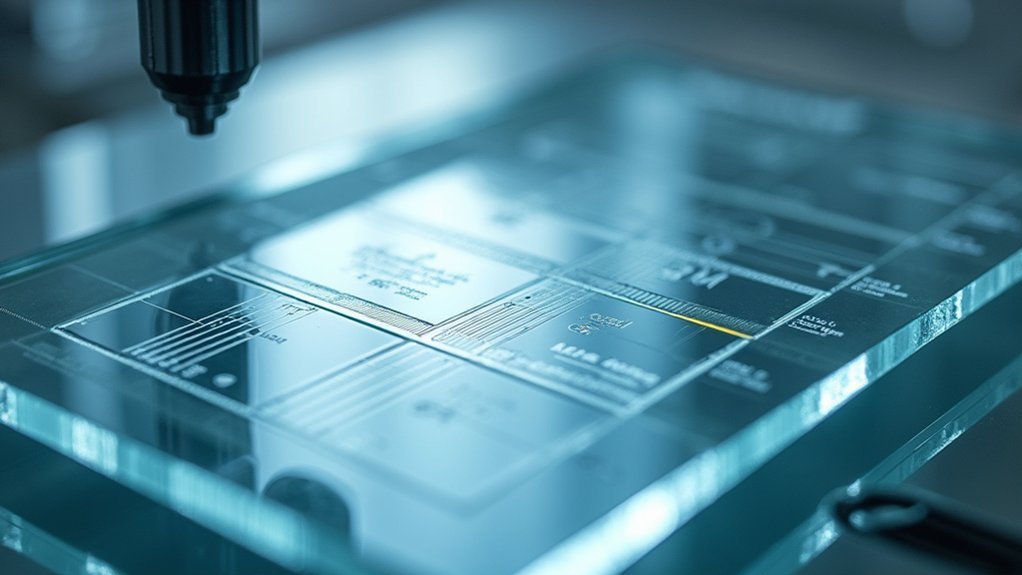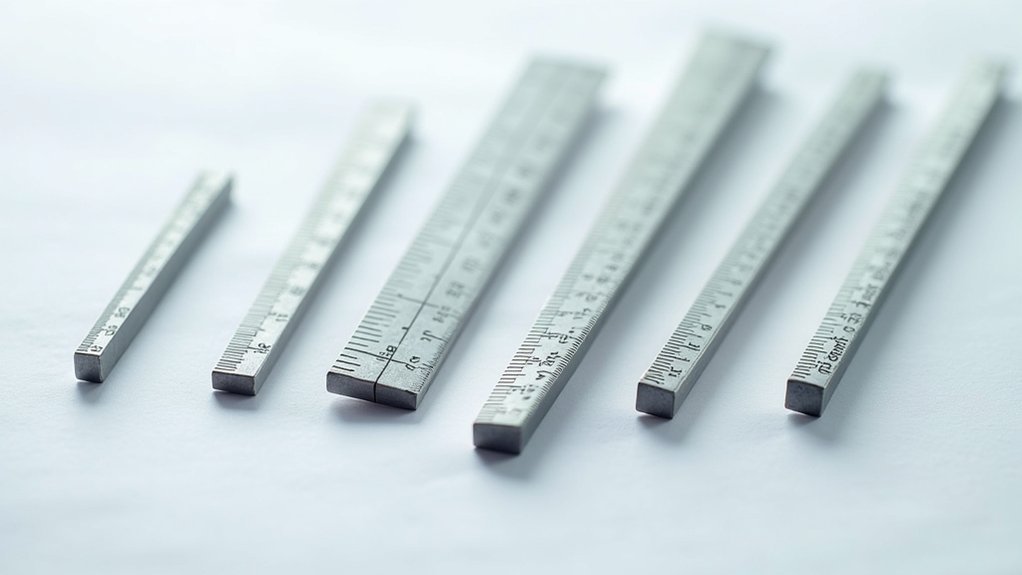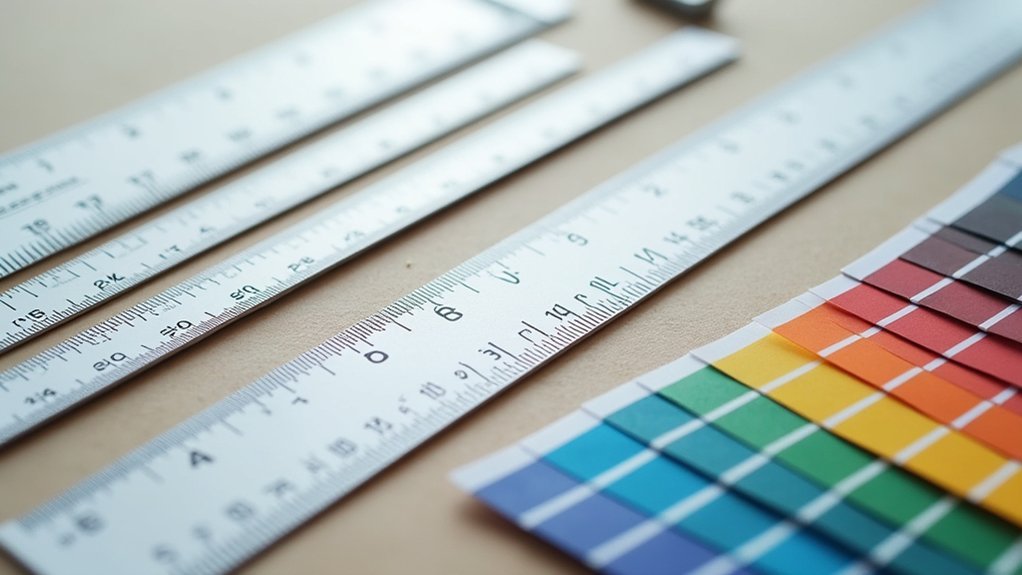For precise scientific photography in ImageJ, always capture calibration images using stage micrometers at identical magnification as research images. Set global scales for batch processing, create custom presets for different objectives, and automate with macro scripts. Validate accuracy using reference materials, position scale bars strategically, and maintain consistent styling across figures. Store calibration data in parameter files, schedule regular recalibration, and troubleshoot pixel aspect ratio issues promptly. These foundational practices guarantee your measurements remain scientifically valid and publication-ready.
10 Best ImageJ Scale Calibration Tips For Scientific Photography

When working with scientific images, proper scale calibration in ImageJ is essential for obtaining accurate measurements. Always begin by capturing a calibration image of a stage micrometer at the exact same magnification as your research images.
To set scale correctly, open your calibration image, draw a line along a known distance, then navigate to Analyze > Set Scale. Enter the measured length and your units (typically micrometers), and check “Global” to apply this scale to all open images.
Establish precise measurements by setting your scale with known distances before analyzing scientific imagery.
If you’re using confocal microscopy, take advantage of the pixel size metadata embedded in your files to avoid manual calibration steps. Remember to verify your calibration periodically, as equipment variations can affect measurement precision.
Finally, add a scale bar to provide visual reference for your scientific photographs.
Using Stage Micrometers for Precise Spatial Calibration
The foundation of accurate microscopy measurements lies in proper spatial calibration with a stage micrometer. This precision tool features a scale marked in micrometers that converts your image’s pixel measurements into real-world units.
To calibrate in ImageJ, capture a stage micrometer image under the same magnification as your experimental samples. Use the Line Tool to measure a known distance on the micrometer (typically 200 μm with a 40x objective). Then open Analyze > Set Scale. Enter your known distance and you’ll establish your pixel size—often around 11.82 pixels per micrometer at 40x magnification.
Don’t forget to select the “Global” option if you want this calibration applied to all open images. This consistent scale guarantees your subsequent measurements maintain accuracy throughout your entire analysis workflow.
Extracting Calibration Data From Image Metadata

Many modern microscopy images contain hidden treasures within their metadata—embedded calibration information that can save you significant time and reduce measurement errors. When you need to calibrate the image in ImageJ, check the file’s metadata first rather than manually measuring known objects.
| File Format | Metadata Access Method | Scaling Information Availability |
|---|---|---|
| CZI (Zeiss) | Bio-formats plugin | Excellent – direct pixel size |
| LSM (Zeiss) | Bio-formats plugin | Very good – embedded scaling |
| TIFF | Original microscope software | Variable – may require manual entry |
| JP2 | Specialized viewers | Limited – check compression artifacts |
| OME-TIFF | Bio-formats plugin | Excellent – standardized format |
You’ll find that Fiji’s bio-formats plugin efficiently extracts image scale data from most microscope formats, ensuring your measurements remain consistent and scientifically valid across experiments.
Setting Global Scale for Batch Image Processing
You’ll save considerable time by configuring a global scale for your batch image processing rather than calibrating each image individually.
Before processing, verify all images share identical magnification to guarantee measurement consistency across your dataset.
For efficient workflows, consider creating a parameter file with your calibration values for different objectives that you can quickly load when switching between image sets.
Global Scale Configuration Workflow
When processing multiple images that share the same magnification, setting up a global scale in ImageJ can dramatically improve your workflow efficiency.
Begin by opening all your target images simultaneously, then measure a known distance on your calibration slide using the Line Tool. Navigate to “Analyze > Set Scale,” enter the measured pixel length and its corresponding real-world value, select appropriate units, and check the “Global” option to apply this calibration across all open images.
Remember to recalibrate if you switch between images captured at different magnifications.
After configuring your global scale, you can add scale bars via “Analyze > Tools > Scale Bar” to visually represent measurements.
Always document your pixel-to-micron conversion ratios for reproducibility in future sessions and consistency in experimental data.
Batch Consistency Verification
Guaranteeing measurement accuracy across multiple images requires thorough batch consistency verification before applying a global scale.
Before processing your image batch, confirm all were captured at identical magnification settings to avoid scaling errors that compromise your results.
First, use a calibration slide to measure a known distance with the Line Selection tool. Enter this value with appropriate units in the “Analyze – Set Scale” dialog, and activate the “Global” option to apply this calibration across all open images.
To streamline future batch processing, save your calibration values for reuse.
Regularly verify pixel-to-micron conversion factors for each objective in your microscope. This verification step maintains consistency across imaging sessions and guarantees your scale settings remain accurate, especially when working with datasets collected over multiple experiments.
Parameter File Setup
Beyond verifying batch consistency, maintaining a well-organized parameter file streamlines scale calibration for large datasets.
Create a reference document listing pixel-to-micron conversion ratios for each microscope objective you use. This becomes invaluable when switching between magnifications during analysis.
To set a global scale in ImageJ for batch processing, navigate to “Analyze – Set Scale,” enter your known size in appropriate units (µm or mm), and check the “Global” option. This applies your calibration across all open images simultaneously.
For efficiency, develop macros that automatically apply the correct scale from your parameter file based on image metadata.
Regularly update these conversion values to reflect any changes in your imaging setup, ensuring measurements remain precise across your entire scientific photography workflow.
Creating Custom Calibration Presets for Different Objectives
You’ll save valuable research time by creating custom calibration presets for each objective lens in your microscope setup.
These presets allow you to switch between different magnifications without manually recalibrating ImageJ each time.
Save Time With Presets
When working with multiple microscope objectives, repeatedly calibrating ImageJ for each magnification can consume valuable research time.
Create custom calibration presets that record microns per pixel values for your different objectives to avoid this repetitive process.
You’ll streamline your workflow by automating scale settings through macro scripts that apply the correct calibration based on your selected magnification.
Simply setup a scale once for each objective, then save these settings as XML files for quick access later.
Store your calibration presets in a centralized ImageJ location to guarantee consistent measurement accuracy across experiments.
Remember to periodically verify your presets against known standards, as pixel sizes may drift with changing imaging parameters.
With well-maintained presets, you’ll shift seamlessly between objectives without sacrificing precision or wasting time on redundant calibrations.
Batch Process Multiple Images
Presets become even more valuable when dealing with dozens of images that need identical calibration. Instead of manually scaling each file, use ImageJ’s batch processing capabilities to apply your calibration settings across multiple images simultaneously.
Create custom calibration presets for each objective by measuring a known distance with the Line Tool and entering the pixel-to-micron ratio in the Set Scale dialog. Save these settings as macros or scripts for quick application to images taken at the same magnification.
For maximum efficiency, utilize the “Global” option in Set Scale to apply your calibration to all open images at once. Maintain a record of pixel sizes for each objective to guarantee you’re using the correct settings.
The built-in Batch Processing feature lets you run these calibration scripts on entire folders, saving valuable research time.
Validating Calibration Accuracy With Known Standards

Once you’ve established a calibration in ImageJ, verifying its accuracy becomes critical for reliable quantitative analysis.
Compare your calibrated measurements against objects with known dimensions to confirm your image calibration is correct before you measure the area of experimental samples.
- Use standard reference materials like polystyrene beads of certified diameters to validate dimensional accuracy
- Measure multiple points on your calibration slide to detect potential distortion across the field of view
- Calculate the percent error between known and measured values to quantify calibration precision
- Create a reference image set with your specific microscope settings for quick validation in future sessions
- Document calibration factors for each objective lens, as pixel-to-unit ratios change with magnification
Automating Scale Adjustments With Macro Scripts
Streamline your ImageJ workflow by automating scale calibrations with custom macro scripts. Instead of manually setting scales for each image, you can implement Guenter Pudmich’s macro that creates a simple dialog interface where you’ll select your magnification from a dropdown menu.
The script then automatically applies the corresponding pixel width for accurate measurements.
For more flexibility, consider using Python scripts to define pixel sizes for different microscope objectives and store these configurations as XML files. You can quickly load these saved settings to guarantee consistent calibration across all open images until you choose to change them.
Remember to regularly validate your automated settings against calibration standards, especially when switching between different microscope equipment, to maintain measurement accuracy in your scientific photography.
Troubleshooting Common Calibration Errors

Even with automated scripts, calibration problems can derail your image analysis workflow. When measurements appear distorted or inconsistent, check these common issues before proceeding:
- Verify your pixel aspect ratio settings are correct to prevent distorted measurements and inaccurate scale bars.
- Add script-specific import lines to resolve module errors when calibration macros fail to execute.
- Compare your calibration against standard references regularly, as equipment variations affect measurement accuracy.
- Include objects of known dimensions in mobile phone captures to establish reliable scale references.
- Maintain consistent camera settings between calibration and analysis sessions to prevent measurement drift.
When troubleshooting persistent calibration issues, remember that even small errors compound across multiple measurements.
Regular validation against known standards guarantees your quantitative image analysis remains trustworthy throughout your research project.
Adding Professional Scale Bars to Publication Images
When adding scale bars to your publication images, you’ll want to position them in uncluttered areas where they won’t obscure critical features but remain easily visible to readers.
Maintain a consistent style for scale bars across all figures in your manuscript, including identical font, color scheme, and relative sizing to create a cohesive professional appearance.
Choose an appropriately sized scale bar that reflects the magnification of your image—too large and it dominates the frame, too small and it becomes difficult to interpret the actual dimensions represented.
Positioning for Maximum Clarity
Although scale bars serve a critical function in scientific imagery, their placement can greatly impact the overall quality of your publication. When positioning your scale bar, you’ll want to maximize image clarity while guaranteeing accurate measurement representation.
- Place your scale bar in a non-intrusive corner where it won’t obscure important features.
- Maintain consistent position across all images in your publication for improved visual coherence.
- Choose a contrasting color that stands out against your image background.
- Adjust the scale bar size to be visible without dominating the image.
- Confirm the scale bar’s unit matches your image calibration for scientific validity.
Remember that thoughtful scale bar position enhances rather than detracts from your data. By following these guidelines, you’ll create professional images that effectively communicate your research while maintaining visual appeal.
Consistent Style Across Figures
Since consistency dramatically enhances the professionalism of scientific publications, maintaining uniform scale bar styles across all figures is essential.
When creating scale bars in ImageJ, standardize your approach by using identical font size, color scheme, and thickness throughout your paper. This visual coherence helps readers quickly interpret spatial dimensions across multiple images.
Access the Scale Bar tool through “Analyze > Tools > Scale Bar” and save your preferred settings. Consider creating a template with your chosen parameters—white or black bars with contrasting text often work best.
Position your scale bars in similar, non-intrusive locations in each image, typically in corners where they won’t obscure important features.
Remember that consistent style doesn’t just look better—it greatly improves comprehension and allows viewers to make accurate visual comparisons between different specimens or experimental conditions.
Size-Appropriate Bar Selection
Beyond stylistic consistency, selecting the right scale bar size fundamentally impacts your image’s scientific credibility.
When choosing your scale bar, always match its size to your image’s magnification—a 100 µm bar works well for 400x magnification images. You’ll create more professional results by following these measurement principles:
- Select scale bar dimensions that reflect standard units relevant to your specimen size
- Position your scale bar in a non-obtrusive corner where it won’t obscure critical features
- Choose a contrasting color (white or black) that stands out against your image background
- Verify that your scale bar’s unit matches your calibration settings (µm, mm, etc.)
- Use ImageJ’s “Analyze > Tools > Scale Bar” option to customize width, height, and font size
Maintaining Calibration Consistency Across Multiple Sessions
When working with ImageJ across different imaging sessions, maintaining consistent calibration is critical for reliable research outcomes. You’ll save significant time by recording pixel-to-micron conversion values for each objective in a dedicated lab notebook or digital document. This practice guarantees you won’t need to remeasure with every new session.
| Objective | Conversion Factor | Verification Frequency | Storage Location |
|---|---|---|---|
| 10x | 0.65 μm/pixel | Monthly | Lab Wiki |
| 20x | 0.32 μm/pixel | Monthly | Lab Wiki |
| 40x | 0.16 μm/pixel | Bi-weekly | Lab Wiki |
| 100x | 0.065 μm/pixel | Weekly | Lab Wiki |
Remember to utilize the “Global” option when setting scales to apply calibration uniformly across all images. Regular verification against calibration slides guarantees your measurements remain accurate, especially after equipment adjustments or maintenance.
Frequently Asked Questions
How Do I Calibrate a Scale in Imagej?
To calibrate a scale in ImageJ, you’ll draw a line on a micrometer image, go to Analyze > Set Scale, enter the known distance, specify units, and check “Global” for all images.
What Is Calibration in Image Processing?
Calibration in image processing is when you convert pixel dimensions to real-world units. You’re establishing a relationship between what’s measured in your image and actual physical measurements like micrometers or millimeters.
How Do I Change the Unit in Imagej?
To change the unit in ImageJ, go to “Analyze” menu, select “Set Scale,” and enter your desired unit (like µm or mm). Check “Global” to apply it to all open images.
How to Set Scale in Imagej Without Scale?
You can set scale in ImageJ without a scale bar by using a known object in your image. Measure it in pixels, then go to Analyze > Set Scale and input the known distance and units.
In Summary
You’ll find that mastering ImageJ’s scale calibration isn’t just about technical accuracy—it’s fundamental to your research integrity. By implementing these ten tips, you’re ensuring your measurements remain consistent and reproducible. When you establish proper calibration protocols, you’ll produce more reliable data and professional-quality images that effectively communicate your findings. Don’t underestimate calibration’s impact on your scientific photography—it’s what transforms your images into quantifiable scientific evidence.





Leave a Reply